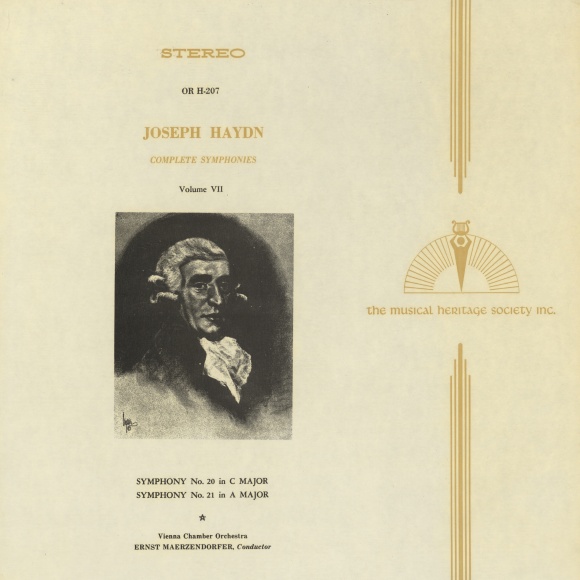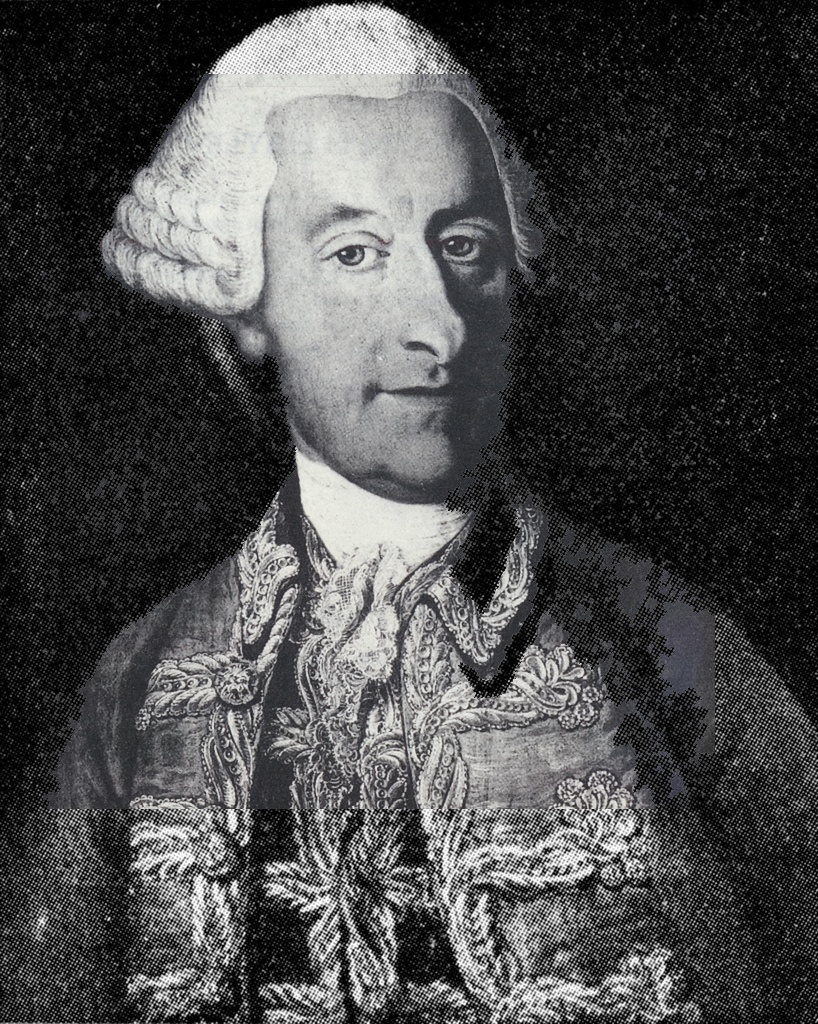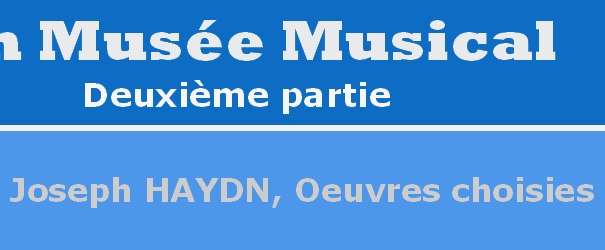Joseph HAYDN
Symphonie No 20 en do majeur
Orchestre de chambre de Vienne
Ernst MÄRZENDORFER
La Symphonie No 20 en do majeur est une symphonie festive de Joseph Haydn, écrite pour 2 hautbois, 2 cors en ut (probablement alto), 2 trompettes, timbales, cordes, auxquels ont été ajoutés un basson et un clavecin continuo. Hodgson situe la date de sa composition en 1761 ou 1762 (Antony Hodgson, The Music of Joseph Haydn: The Symphonies. London: The Tantivy Press, 1976, page 202), tandis que Brown pense qu'elle a probablement été composée avant 1761 (A. Peter Brown, The first golden age of the Viennese symphony: Haydn, Mozart, Beethoven, and Schubert, Indiana University Press, 2002. ISBN 0-253-33487-X, 9780253334879, page 47). Selon Calvin Stapert elle a été composée dans le groupe de 15 symphonies du mandat de Haydn auprès du comte Morzin (1757 - mars 1761) (Calvin Stapert, Playing Before the Lord- Life of Joseph Haydn, 2014, page 35). Dans l'ordre chronologique du site haydn107.com c'est la huitième symphonie que composa Joseph Haydn.
Quelques précisions sur cette symphonie, citées des Notes on Symphonies 20-35 by H.C. Robbins Landon publiées en décembre 1972 dans le 7e volume de l'intégrale des symphonies de Haydn enregistrée sous la direction d'Antal Dorati:
"[...] We have seen in many other examples that these festive works, with their high horns and/or trumpets with kettledrums, were often composed for some special occasion, such as the visit to Eszterhaza Castle of the Empress Maria Theresa; or to honour an Austrian Field Marshal such as General Laudon.
We wonder if Haydn did not occasionally compose a festive symphony of this kind for an Austrian monastery such as Göttweig or Melk or Kremsmünster, particularly about the end of the year 1760 or the beginning of 1761, when he may have been without a position for a month or two. The glittering sound of this symphony would fit well in the «Prunksaal» of one of the great Austrian abbeys, with their stupendous Baroque architecture and elaborate painted ceilings in the manner of Tiepolo. It is generally fruitless to try to match Austrian Baroque to music of the period, and Austrian historians generally prefer to ally Bruckner to St.Florian (even to its interior architecture) rather than Haydn; yet in this slightly impersonal and brilliant C major Symphony there is much of the wordly pomp that surrounded the great Austrian Baroque monastic buildings of the eighteenth century; it was Art for the eye and the intellect.
As we have come to expect - with Haydn’s symphonies of c. 1760, the wind instruments are omitted not only in the slow movement - a graceful Andante cantabile held together with a running second violin part - but also in the Trio of the Menuet. The Finale is in a large-scale A-B-A form, the “B” section being in the tonic minor and without trumpets and timpani; the movement shows its finale character in the quick metre (Presto, 3/8) but also in the choice of form, and this is the main difference between it and the first movement, which also uses a quick metre (Allegro molto, 2/4) but is, of course, in pre-classical sonata form.
By pre-classical we mean that although there are even two main subjects, the second one in the dominant, the development section is not that which we know from “high classical” music such as Haydn’s Paris or London Symphonies, or Mozart’s mature symphonies. At this period (c. 1760), the development is more in the nature of a contrasting middle section. But unlike the ‘“B” section of the Finale, the middle section of the first movement contains motivic extensions of the previous thematic material and the lead-back to the recapitulation is of much more dramatic proportions than the same passage in the Finale. This accentuation of the recapitulation by preparing its arrival is, in fact, a hallmark of the later Viennese classical style; here, in No. 20, it is in the nature of a pedal point on the dominant, with soft punctuation from the trumpets and timpani; later, as in No. 102, this soft timpani punctuation will become a thrilling crescendo which propels the music into the blazing re-statement of the opening thematic material. That was a quarter-of-a-century later. ... [...]"

Dans les années 1960 (*), Ernst MÄRZENDORFER enregistra cette symphonie avec l'Orchestre de chambre de Vienne (Wiener Kammerorchester) dans le cadre de son intégrale des symphonies de Joseph Haydn, pour le label Musical Heritage Society. Pour plus de détails sur cette intégrale voir les excellentes publications de Christopher HOWELL sur ces pages de MusicWeb International: 1ère partie, 2e partie. L'enregistrement fut publié sur le disque Musical Heritage Society, OR Series (**), OR H-207, couplé avec la symphonie No 21 sur l'autre face.
[*] Je n'ai pas encore pu trouver de datation précise pour l'enregistrement et la publication des symphonies de Haydn sous la direction de Märzendorfer: si une personne visitant cette page en sait plus, toutes informations m'intéressent -> couriel!
Voici donc...
Joseph Haydn, Symphonie No 20 en do majeur, Hob. I:20, Orchestre de chambre de Vienne (Wiener Kammerorchester), Ernst Märzendorfer
 1. Allegro molto 05:02 (-> 05:02)
1. Allegro molto 05:02 (-> 05:02)
 2. Andante cantabile 06:10 (-> 11:12)
2. Andante cantabile 06:10 (-> 11:12)
 3. Menuet 03:38 (-> 14:50)
3. Menuet 03:38 (-> 14:50)
 4. Presto 03:17 (-> 18:07)
4. Presto 03:17 (-> 18:07)
Provenance: Musical Heritage Society, OR Series (**), OR H-207.
[**] OR Series est l'abréviation de "Orpheus Series": noter la lyre - symbolisant Orphée - tenue par le personnage du logo sur la pochette et les étiquettes
que vous pouvez obtenir en...
pour un téléchargement libre
4 fichier(s) FLAC et 1 fichier PDF dans 1 fichier ZIP




